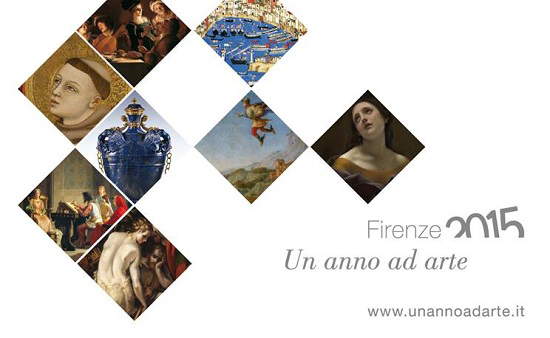Will the new autonomous museums in Florence spell the end of the One Year in Art project?
We did not anticipate anything, but rumors had been swirling for some time now, given the bureaucratic situation of Florentine museums: the splendid initiative Un anno ad arte has been suspended. This was announced a few days ago by Paola Grifoni, MiBACT’s regional secretary for Tuscany. The news passed quietly and was relayed by very few newspapers and websites, but it still struck a chord with art and culture lovers, especially those who, like us, are used to frequent Florentine exhibitions.
The reasons for the suspension are easy to guess. Florentine museums are in fact going through a period of strong renewal (whether for the better or for the worse, will have to be determined in the coming times), and all those museums that, until before the reform of the Ministry, were under the aegis of the Polo Museale Fiorentino, will see their fortunes divided from here on. As is well known, in fact, the Polo Museale Fiorentino no longer exists: the legacy of the institution has been collected by the three new autonomous museums (Uffizi, Galleria dell’Accademia and Bargello) around which the smaller museums will gravitate (for example, Palazzo Pitti will depend on the Uffizi and the Medici Chapels will fall under the authority of the Bargello).

A project such as Un anno ad arte, which was also created to connect the institutes of the Polo Museale Fiorentino and make their ties firm, will probably no longer have any reason to exist, given the dismemberment of the Polo and since the museums born from its ashes will have decision-making autonomy. Of course, it is still too early to make final judgments, and it is still too early to speak of an end to the project: as Paola Grifoni herself explained to Corriere Fiorentino, it would be a “normal act” due to the changes in the leadership of the museums. But it is also certain that it is perhaps risky to speak of an act that “does not deserve the attention of the press,” also because there is still secrecy about what will become of the exhibitions that were being worked on for the 2016 edition of Un anno ad arte: the new directors will decide. It is therefore legitimate to express perplexity and concern: suffice it to say that if until this year all exhibitions were coordinated by a single institution, from next year it will be necessary to agree on three. And moreover new ones, and with directors who come from completely different backgrounds. Obviously now, on everyone’s part, there is the hope that common sense will prevail (although, in the affair of the new directors of state museums, very little common sense has been seen) and that therefore the museums will find agreements and maintain that spirit of collaboration that had made the poster of Un anno ad arte one of the main cultural palimpsests in our country.
With all its pros but also its cons, of course: one has always blamed, at Un anno ad arte, the nefarious custom of not dividing museum visitors from exhibition visitors. A choice, due to agreements with the private ticketing company, that would serve to cover the huge expenses of implementation where sponsor subsidies would be insufficient. But a choice that also has significant disadvantages: first, it forces visitors interested only in the exhibitions to attend the same queue that is made by visitors interested only in the museum (and at the Uffizi and Accademia, the experience can often be unpleasant), it forces those not interested in the museum (and vice versa) to pay a premium ticket anyway, and it does not allow reliable statistics to be tracked. On the other hand, it must be said that Un anno ad arte, since its first edition (in 2006: this year was its tenth anniversary), has been an incredible unicum, because no other city in Italy organizes a program of several exhibitions, at the same time, of such a high profile. This year alone, in the museums of Florence we had the exhibition on Gerrit van Honthorst, the one on Piero di Cosimo, and again Carlo Dolci and the exhibitions on Firenze Capitale and Carlo Portelli that will open in the months to come. These have often been exhibitions of the highest scientific interest, often monographic premieres or exhibitions of great popular value: it would be a pity indeed if this heritage were to disappear at any moment.
We can only hope that the review will be able to continue next year: it is clear that getting three different parties to agree will be much more difficult than working under a single institute, and above all we will have to see what consideration of the exhibitions the new directors will have (in the hope that they will not indulge in trivial box office operations). So let us enjoy the last exhibitions of 2015 (we will visit Piero di Cosimo and Carlo Dolci shortly) hoping, at the risk of being repetitive, that the interests of culture will prevail over everything.
Warning: the translation into English of the original Italian article was created using automatic tools. We undertake to review all articles, but we do not guarantee the total absence of inaccuracies in the translation due to the program. You can find the original by clicking on the ITA button. If you find any mistake,please contact us.




























